What do Japanese people like to do for Relaxation and Entertainment?
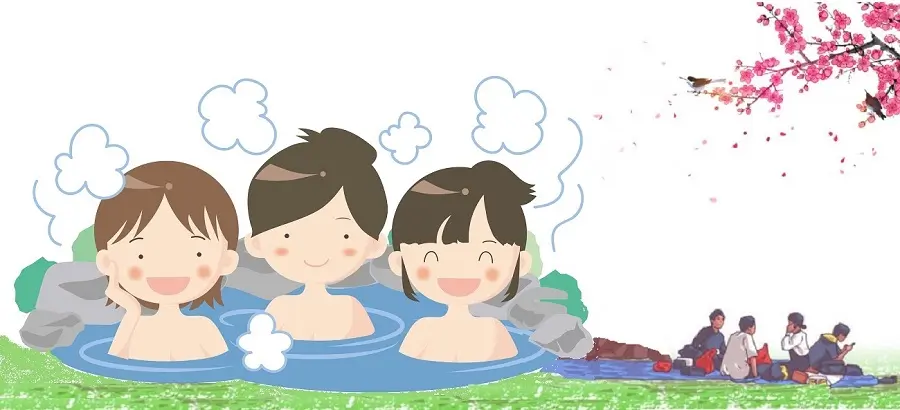
When you decide to live and work in Japan, you will find the people are very hardworking. So how do people enjoy themselves, and what do they do for relaxation and entertainment?
I am Japanese, raised in America, having moved back to Tokyo twenty years ago. Growing up, I returned almost every summer to visit relatives and friends and developed a taste for enjoying free time like Japanese people do in Japan.
What do Japanese People Enjoy?
Like in most cultures, enjoying great food with family and friends, traveling, playing sports, going to the amusement park, and spending a day at the beach are very popular pastimes.
However, some things are indigenous or native to Japan as part of the culture. It would be difficult to imagine life without these favorites, part of Japanese tradition, almost like a national pastime.
Onsen (Hot Springs)
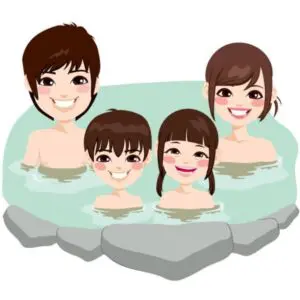
Onsen (温泉) means hot springs public or private bathing facilities. Enjoying Onsen is a part of Japanese history dating back to the Heian period, even before the Shogunate Edo period.
There are over 3,000 public onsens across the country. Each has its unique identity depending on the region and area. Some may be in the mountains, and others are along the coast. Most of these have both indoor and popular outdoor Rotenburo (open-air bath) with breathtaking views.
It’s a tradition and a national pastime for Japanese people to visit Onsens, especially at night, for fun and relaxation.
Japanese enjoy going to Onsen more during the winter, soaking in the onsen as the steam rises off the water. Some of these Onsens are stand-alone, but most are part of a Ryokan or traditional Japanese-style inns.
Staying at Ryokan (Traditional Style Japanese Inns)
Ryokan, or a traditional Japanese-style inn, is what most people really enjoy and look forward to.
There are traditional Wafu (和風) or Japanese-style inns and large resort-type inns. Many of these Inns are fully equipped with karaoke, a game center, and play areas for kids. However, staying in these traditional Japanese Inns is quite an experience.
The rooms in these Ryokan are with tatami (畳) or mat used as a flooring material. You change into Yukata or traditional-style robes and can visit the onsen as often as you like. However, if you opt for a private onsen, you will have to book those in advance.
You also enjoy full-course Japanese meals served in the room. In these Ryokans, you sleep on the conventional Futon on the floor. You are treated to a full-course Japanese breakfast in the morning, albeit very early! In some larger resorts, meals are taken in dining areas, usually buffet-style, with Japanese and Western dishes.
Hanami
Hanami (“Hana” = Flower, “mi” = to see) is a centuries-old tradition and a favorite activity in Japan. Japanese people enjoy Hanami with family, friends, or colleagues.
In Japan, cherry blossoms, or “sakura,” symbolize the transient nature of life, beauty, and renewal. They remind us of life’s fleeting beauty and impermanence, as the blossoms last only a short period each year.
The cherry blossom has been an integral part of Japanese culture for centuries. It is also associated with new beginnings, as the blooming of Sakura coincides with the start of Japan’s academic and fiscal year.
There are many popular places for Hanami in Tokyo, from Yoyogi Koen (Yoyogi Park) to the Imperial Palace. However, one of my favorites is walking along the river lined with Sakura trees in Nakameguro. Looking down along the river lined with cherry blossoms in the evening is quite a sight.
The areas near the Imperial Palace and various shrines in Tokyo are also beautiful. Some areas are lit at night, and the cherry blossoms look amazing against the contrast of the night sky.
Most people will picnic at popular sites, sitting on mats under the beautiful cherry blossom (Sakura) trees. However, it is best to reserve a space early to get a prime sitting spot. Bento, Onigiri, food of your liking, and beverages are shared while you view and have a good time together.
Areas outside of Tokyo are also beautiful. If you like hiking or playing golf, there are many courses with cherry blossoms lining the fairways. Viewing Sakura while playing is a definite bonus! The cherry blossom season in spring only lasts a short time, so it’s best to be prepared not to miss out when they start to bloom.
Japanese Festivals
Omatsuri
Matsuri means traditional Japanese festivals. Matsuri refers to comfort, prayer, and gratitude to God and Nature. Generally, Japanese people call it Omatsuri. The sound “O” is added to show politeness or respect for the word Matsuri.
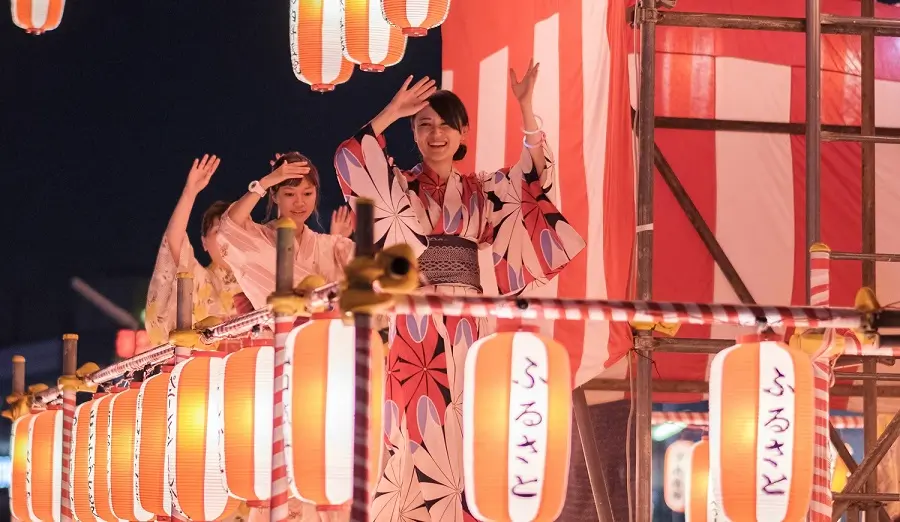
Omatsuri occurs throughout the year, many dating back centuries to honor and respect Kami or divine gods.
Each region across Japan has its unique celebration, bringing the entire community together. Some are major festivals, and others are celebrated on a smaller scale. However, Japanese people look forward to participating in or attending these Matsuri celebrations.
During the Omotsuri festivals, there is excitement about the countless food stalls lining the streets. Also, watching Obon Odori, (traditional dance) and people carrying the Mikoshi ((神輿) ) or portable shrine is a treat to the eyes.
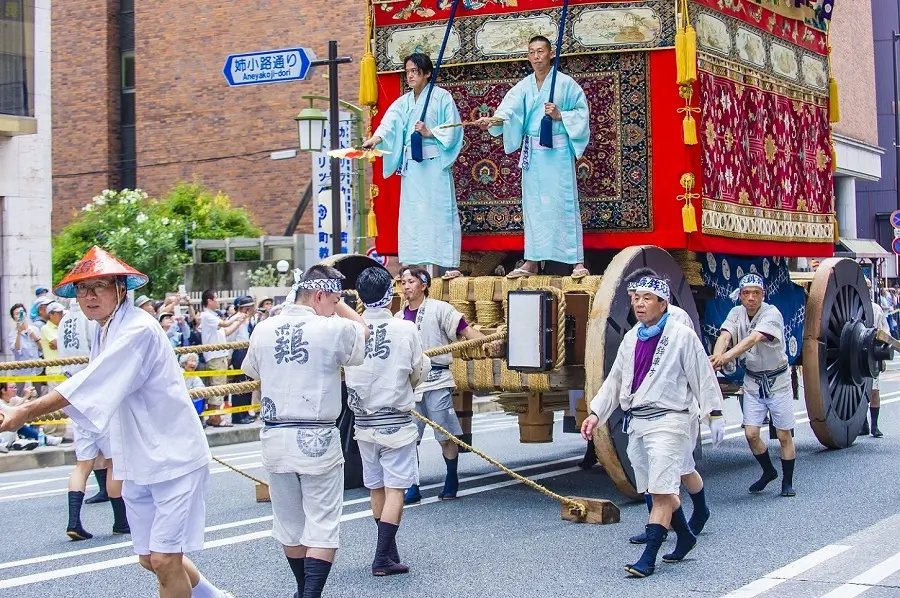
Different Flavors of Omatsuri
It is exciting to watch people carry or push Mikoshi with their unified, cadence-like chants of “yoisho, yoisho.” You will see people, both Japanese and foreigners, carry these on their shoulders or parade them through the town’s streets.
The more prominent regional festivals are spectacles, with large, elaborate floats pulled along the streets. These floats, handmade by community members, are an activity in themselves.
There is also the spectacle of fireworks, which is especially enjoyed by all. Celebrating Omatsuri with family, friends, and the community is a great way to do this, which is why it is another one of the favorite activities for Japanese people.
While growing up in the USA, during every summer vacation in Japan, our trip was not complete without going to O-matsuri.
The smell of grilled corn on the cob (yaki tomorokoshi), the sound of taiko drums and flutes, and crowds lining the food stalls or the stalls for games and watching the Obon-Odori dance at the center of the festival with bright lanterns was a ritual.
We would wear the traditional yukata and drink ramune, a candy-like tasting soda in a blue bottle with a glass ball stopper. Along with other kids, we would enjoy Kingyo sukui, where you take a ring-shaped scoop made of thin paper to scoop goldfish, which you can take home in a plastic bag.
Traditional Japanese Food During Omatsuri
Food is definitely one of the favorite attractions for Japanese people, from sweet to savory, traditional Japanese delicacies to international cuisine.
Food is sold out of stalls that line the streets. Savory like yakisoba, tomorokoshi corn, shioyaki (grilled Ayu fish), steamed potatoes (Jaga butter), takoyaki, yakitori, okonomiyaki to kebabs, curries, samosas, sausages, shaved ice (kakigori), baby castella cakes, cotton candy (wataame), chocolate-covered bananas, crepes.
Omatsuri is a community affair, so it is common for many restaurants and shops to offer their menu items. The experience of mingling, socializing, and walking with family and friends while taking a glimpse of the parades is great!
Samba Carnival
There are also artistic and international festivals, such as the samba carnival, which is fun to watch. The snow festival in Sapporo is also popular, with ice sculptures being the featured attraction.
I went to one many years ago, and it was so cool—no pun intended. I loved seeing huge monuments and sculptures made out of ice with detailed, intricate precision. People come worldwide to compete for the best sculpture with picks, chainsaws, and shovels in hand.
Obon
The Japanese holiday Obon (お盆) is at the beginning of the summer and is more than just a typical holiday. It’s an event to honor past ancestors’ spirits and appreciate your family. Japanese people typically take several days off in the summer to travel back to their hometowns. This is a time to experience the local Obon festival.
What is Obon?
Obon is an annual holiday on which the spirits of past ancestors travel back into the mortal world. It is believed that Obon originated from a traditional Buddhist event in India, which Empress Suiko started in Japan around the 7th century.
The word Obon is a shortened form of the word ura-bone or ullambana— a Buddhist festival aimed at consoling the spirits of their ancestors from suffering.
During the Edo period (1603-1868), it became popular among ordinary citizens as a special holiday to honor the spirits of their ancestors.
Similar festivals are held in mid-June in some Asian countries, such as China. Many people visit their hometowns and the graves of their deceased family members to honor the spirits of their ancestors and loved ones.
In addition, some families light candles in front of their homes to help guide the spirits to home. The rules and customs of the holiday can vary depending on the region, and some areas of Japan have become well known because of their local Obon festival.
Besides Golden Week and New Year’s, Obon is also recognized as one of Japan’s three biggest holiday times. During the Obon period, public transportation and accommodation are booked well in advance, and it can be pretty difficult to travel in Japan if you’re unprepared.
Obon isn’t an official public holiday in Japan, but many people take time off from work, and many local businesses close during this period.
Customs and Traditions of Obon
A series of events are held to help welcome back the spirits and see them off again. Japanese people begin Obon with a visit to their family graves to clean them and pray for lifelong peace, known as Ohaka mairi (お墓参り). Following are the customs of Obon that can be seen all across Japan:
Mukaebi The Welcoming Fires
On August 13th, people make small bonfires known as mukaebi (迎え火) in front of their homes to guide the spirits back to the mortal world.
Altars of the deceased are also decorated with Japanese sweets, flowers, and other objects they enjoyed in their lifetime. Some families also create horses made of cucumbers and cows made of eggplants. The horse will help the spirits return home quickly, while the cow will slowly take them back to heaven after the festival.
Hoyo/ Kuyo, the Memorial Service
On August 14th and 15th, families invite a Buddhist priest to their homes or visit a shrine to recite a sutra. During this, they perform a memorial service called houyo or kuyou (法要・供養). After the recital, they share a meal shojin ryori (精進料理), which is a traditional dining style of Buddhist monks in Japan. The meal is vegetarian and includes beans, spinach, and pickled cucumbers.
Okuribi (Bonfire Light)
On August 16th, Obon concludes with a bonfire lighting the night sky to send the ancestral spirits back to the spirit world.
The origins of the dance go back about 600 years to the Muromachi Period (1336-1573). Dancers wear yukata and dance to traditional music while circling a stage yagura (櫓). Many bon-odori dances around Japan are traditional dances performed for the deceased.
Toro Nagashi (The Floating Lanterns)
Tourou nagashi (灯籠流し) officially begins the moment the ancestral spirits commence their return to the spirit world. Families unite to light traditional candle lanterns tourou (灯籠) and set them afloat down the river to send the spirits off.
Obon Festivals Around Japan
Obon festivals have become a symbol of summertime in Japan and a great reason to travel around Japan in the summer.
Tokushima Awa Dance Festival
It is the most famous bon-odori festival in Japan. Held from August 12-15 in Tokushima Prefecture every year, it has been ongoing for over 400 years and attracts more than 1 million visitors to Shikoku Island. Tokyo also has a dance festival based on the Awa Odori festival in the streets of Koenji on the last weekend of August.
Gifu Gujo Odori
The Gujo Odori is widely known as the longest bon-odori festival because it’s held for 30 nights from mid-July through early September in Gujō, Gifu. During Obon, from August 13th to August 16th, several dances and songs are performed throughout the night.
Akita Nishimonai Bon Odori
The Nishimonai Bon Odori isn’t as well-known as the other festivals, but it’s still a great festival to see. The festival has been going on for over 700 years.
Nishimonai Bon Odori festival is held from August 16th to August 18th in Ugo Town, Akita Prefecture. For the dance, dancers cover their faces with black hoods called hikozukin (彦三頭巾)and woven half-moon hats called amigasa (編笠・編み笠) in Japanese.
Footnote
Japanese people are known for being non-religious, and festivals have transformed into entertainment rather than tradition. Obon is one of the few events in the year where Japanese people can focus on their families and return to their homes.
If you are in Tokyo and cannot travel to Kyoto, Aomori, or Kyushu for the more well-known traditional festivals, you will not miss the ambiance and experience. Despite the heat, summer festivals have always been a favorite of Japanese people.
Parades also include young and old members dancing through the streets in different groups. They usually take place over a weekend and finish in the late evenings.
The Japanese enjoy many favorite activities, such as undoubtedly great food and other very popular activities. That said, everyone has their favorite activity or hobby to escape the stress of daily life, but the above are some of the favorites all Japanese enjoy. They are a part of Japanese culture, and it would be hard to imagine life in Japan with them!
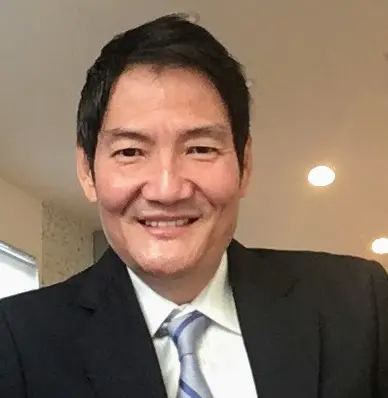
Native Japanese raised in the USA, Yoshinobu Takaoka returned to Japan 20 years back and is a senior finance professional with over 20 years of working experience in Japan. While being Japanese, Yoshinobu has a deep understanding of Japan and Japanese customs, growing up in the U.S. he also has a deep understanding of western culture and what makes foreigners curious about Japan.
